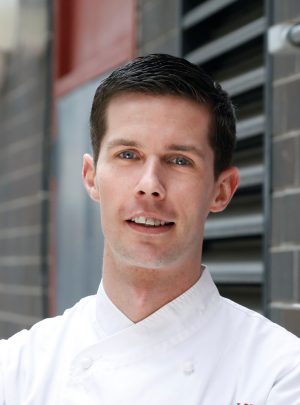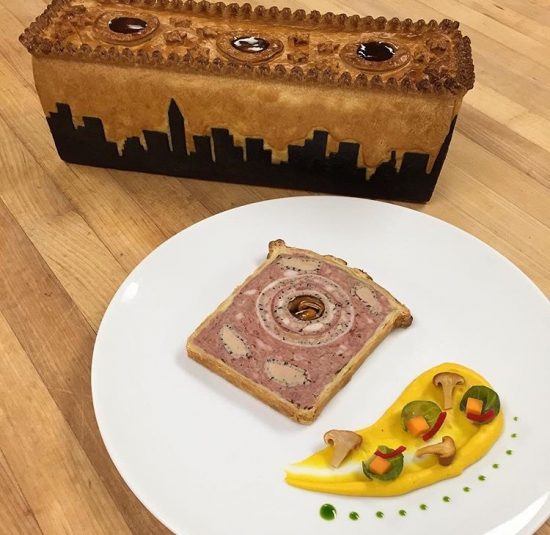A native of Bordeaux, Chef Aurélien Dufour’s passion for charcuterie — a branch of cooking so treasured in France it could have its own food group — dates back to his childhood, when he enjoyed cured meats with nearly every meal. By the time he enrolled in culinary school, he knew what he wanted to focus on in the kitchen.
Chef Aurélien spent years sharing his passion with discerning diners in New York, as Executive Chef Charcutier for Daniel Boulud — and more recently, by launching Dufour Gourmet, an online wholesale marketplace for handmade pâtés, sausages and specialty meats. Recently, we asked Chef Aurélien a few questions about charcuterie and one particularly advanced dish — pâté en croûte.

You moved to NYC from France in 2010 — has the reception of classic French cuisine in the US changed since then?
I cannot tell you about the classic French cuisine but I can tell you that the French charcuterie has had a big evolution in New York City since I arrived in 2010. I noticed that people are very familiar with dry-cured items and they are now more and more interested in French charcuterie items like fresh sausages, pâtés and terrines.
They want to know where it comes from, how it is made, the story behind it, how you eat it, and learn more about these kinds of products in general. It is also getting more attention from the culinary scene — many American chefs have started their own lines of charcuterie and there are more marketing events around it like Cochon 555 and Charcuterie Masters.
When did you realize that you wanted to specialize in charcuterie?
I spent my childhood in Germany where I was introduced to the charcuterie tradition — there you eat it for breakfast and dinner every day, so it’s a lifestyle. When I moved back to France as a teenager, I enrolled in culinary school and decided to specialize in charcuterie.
I was lucky to learn from the talented chef and distinguished charcutier Gérard Berranger, a “Meilleur Ouvrier de France” — the highest and most prestigious award in the food industry in the country. He taught me the technique and tradition of French charcuterie. By his side, I mastered pâtés, terrines, galantines, ballotines, crépinettes and sausages, and also participated in many charcuterie competitions.

Name the characters that would appear on the classic charcuterie board.
On a beautiful wood board, I would display pâté en croûte, two kinds of pâté, two kinds of terrines, a variety of cooked ham, such as jambon de Paris, a dry ham like Bayonne, and dry sausage like saucisson sec. To complement, I would have cornichons (French pickles), slices of bread and mâche salad.
Can you tell us about the origin of pâté en croûte?
From what I’ve heard and read, the pâté en croûte was already used back in Middle Ages. The dough around the meat was not edible — rather, it was a different way to cook the meat and it extended the shelf life. With time, the dough became edible and the pâté en croûte became a classic French charcuterie item.
Describe your approach to preparing a pâté en croûte.
First, it depends on the season, as this will determine which meats and vegetables you can use. Then, you need to know exactly how you will incorporate each ingredient into the different layers to build the pâté en croûte. I always draw my product on paper before I start producing it. It is also very important to have high quality ingredients to create this kind of charcuterie item.
What’s the most inventive or creative pâté en croute you’ve seen? I would say that the most impressive pâté en croûte is the classic Oreiller de la Belle Aurore. It is basically a huge pâté en croûte in a shape of a pillow (“oreiller” in French) made of several game meats, poultry, duck, hare, foie gras and more. It was first created by Mr. Brillat-Savarin who made it as a sign of love to his mother and since 1937 has been a specialty of Charcutier Reynon in Lyon, France. In the past few years, other charcutiers have started recreating their own Oreiller de la Belle Aurore.
Looking to hone your culinary skills with ICE's advanced culinary courses? Click here to learn more.




